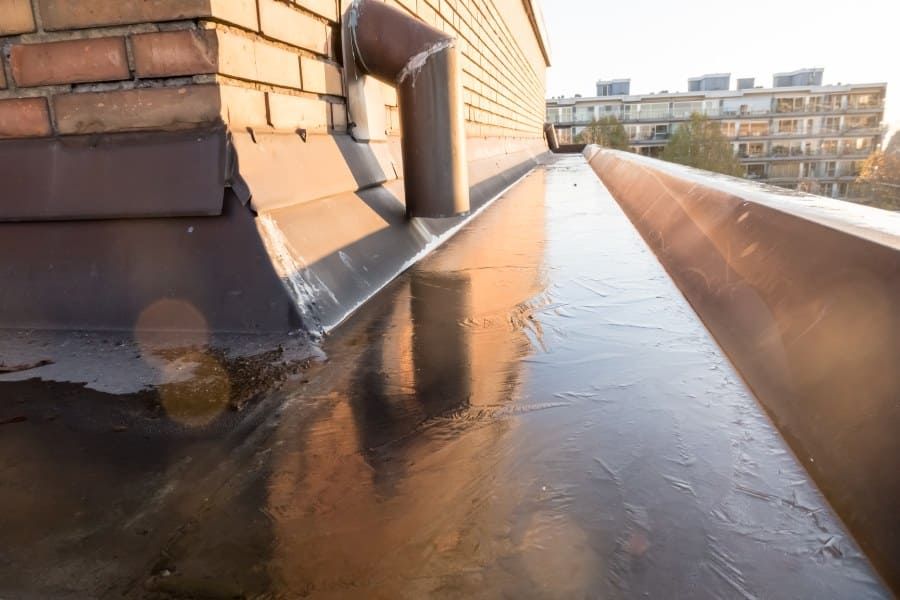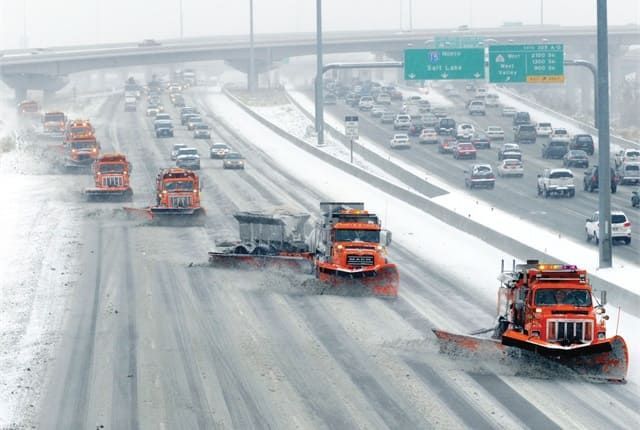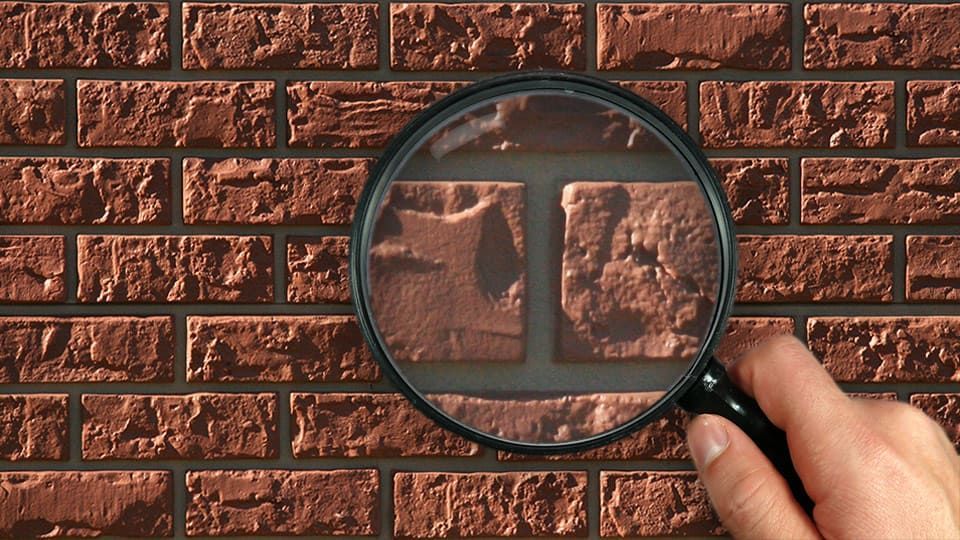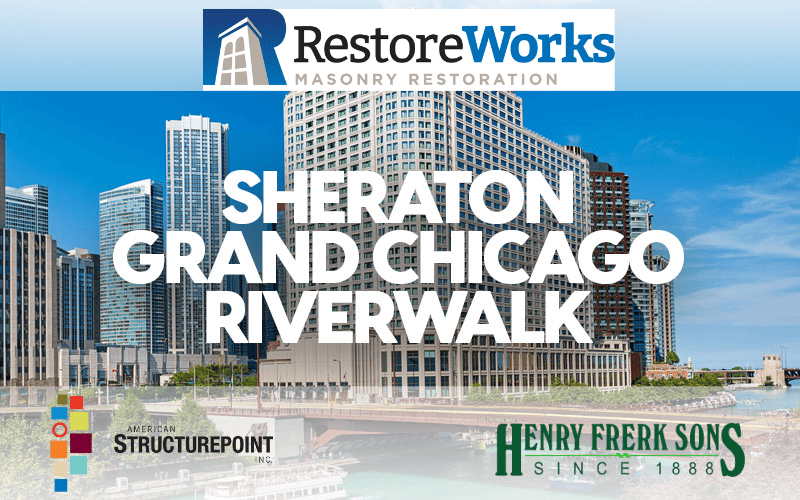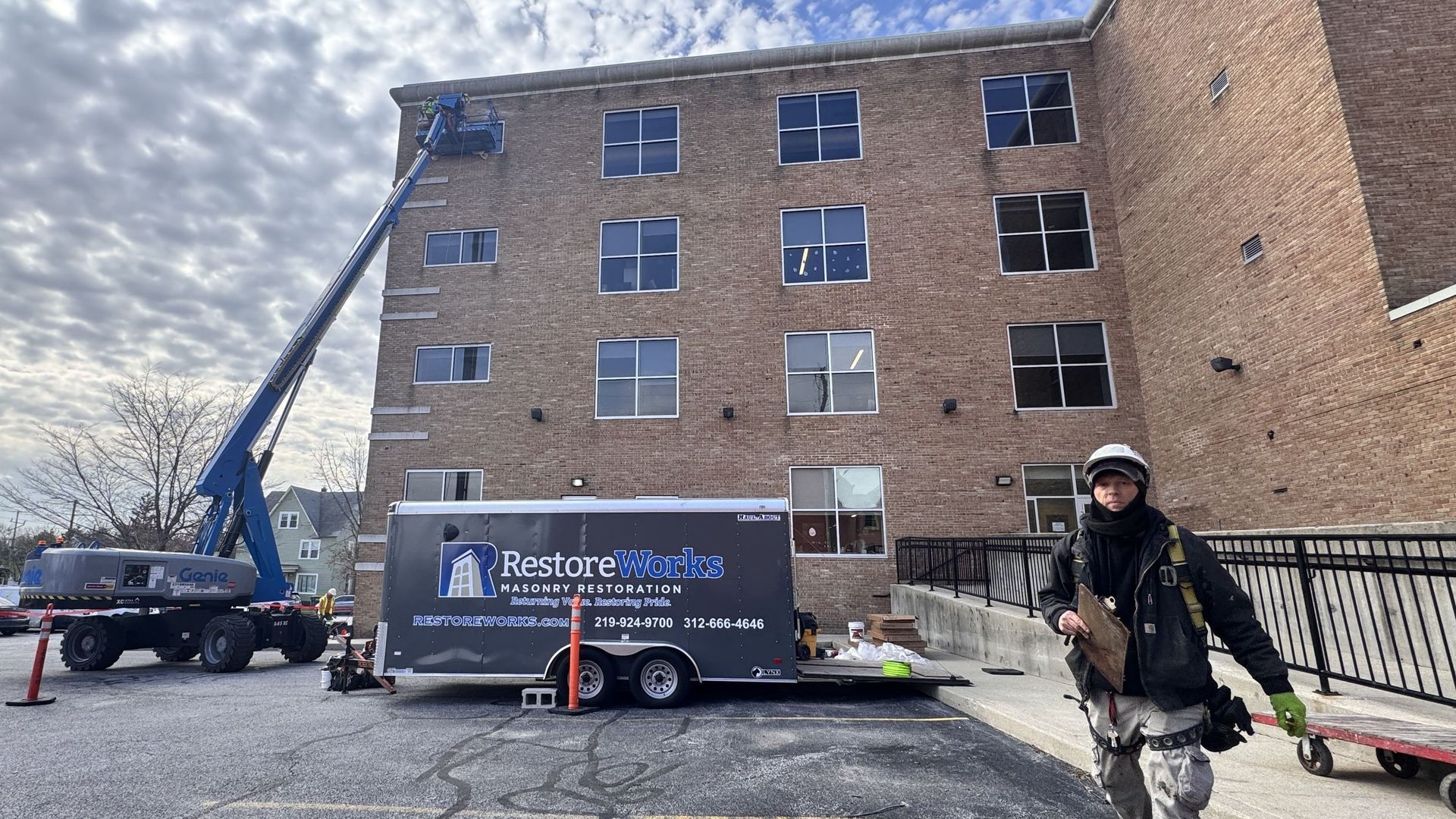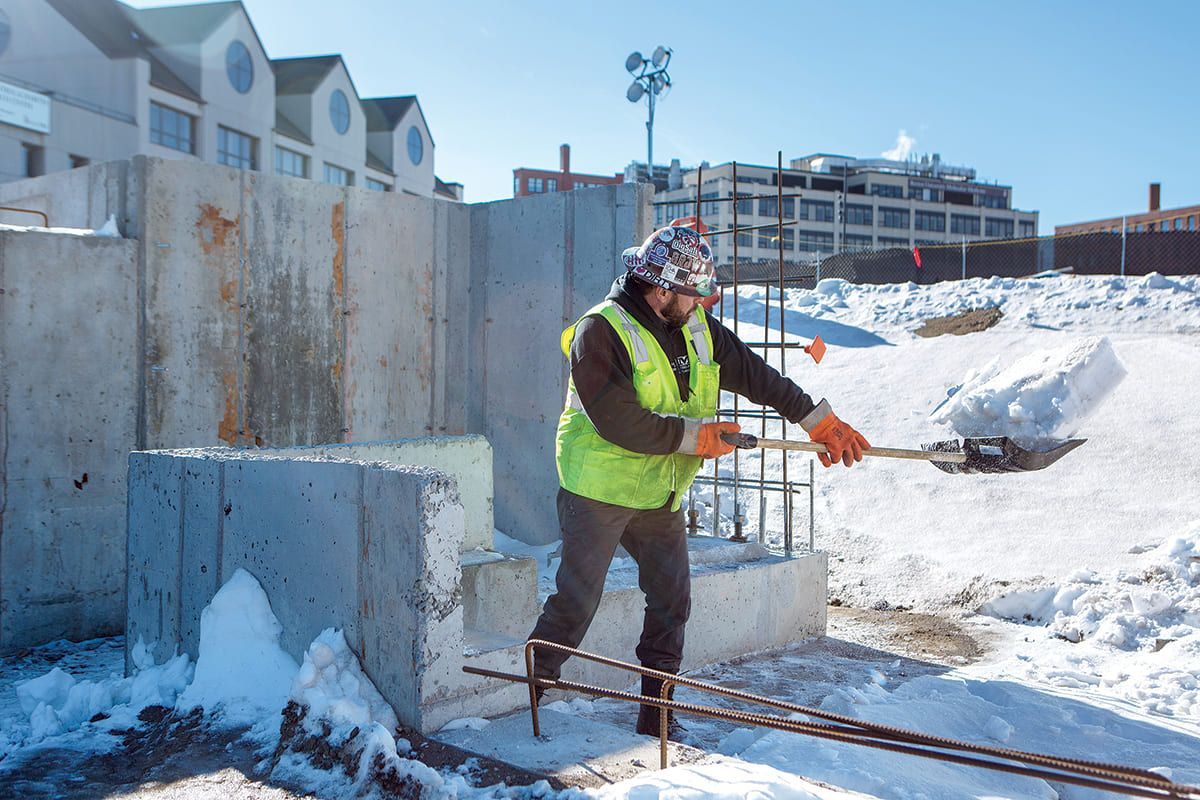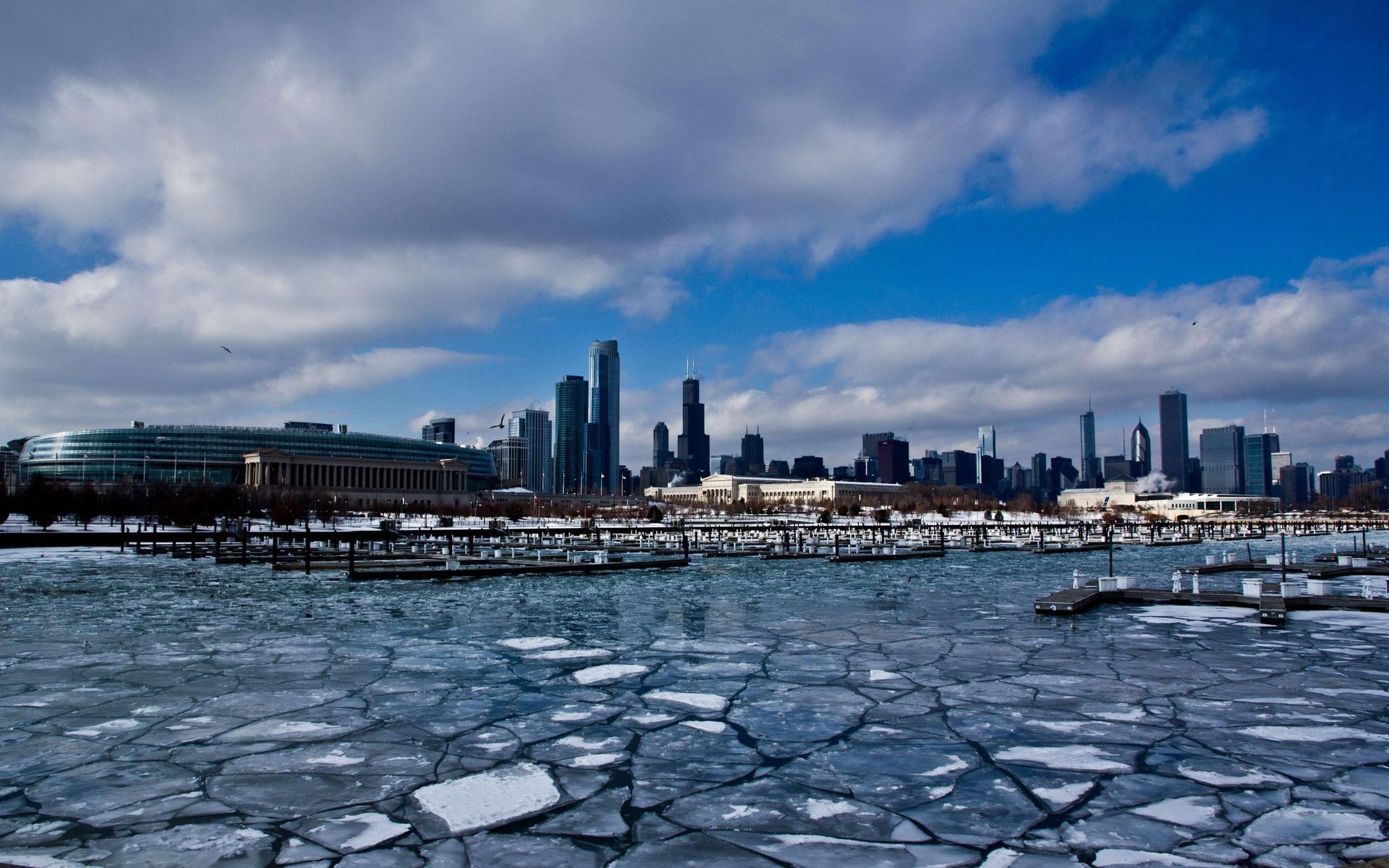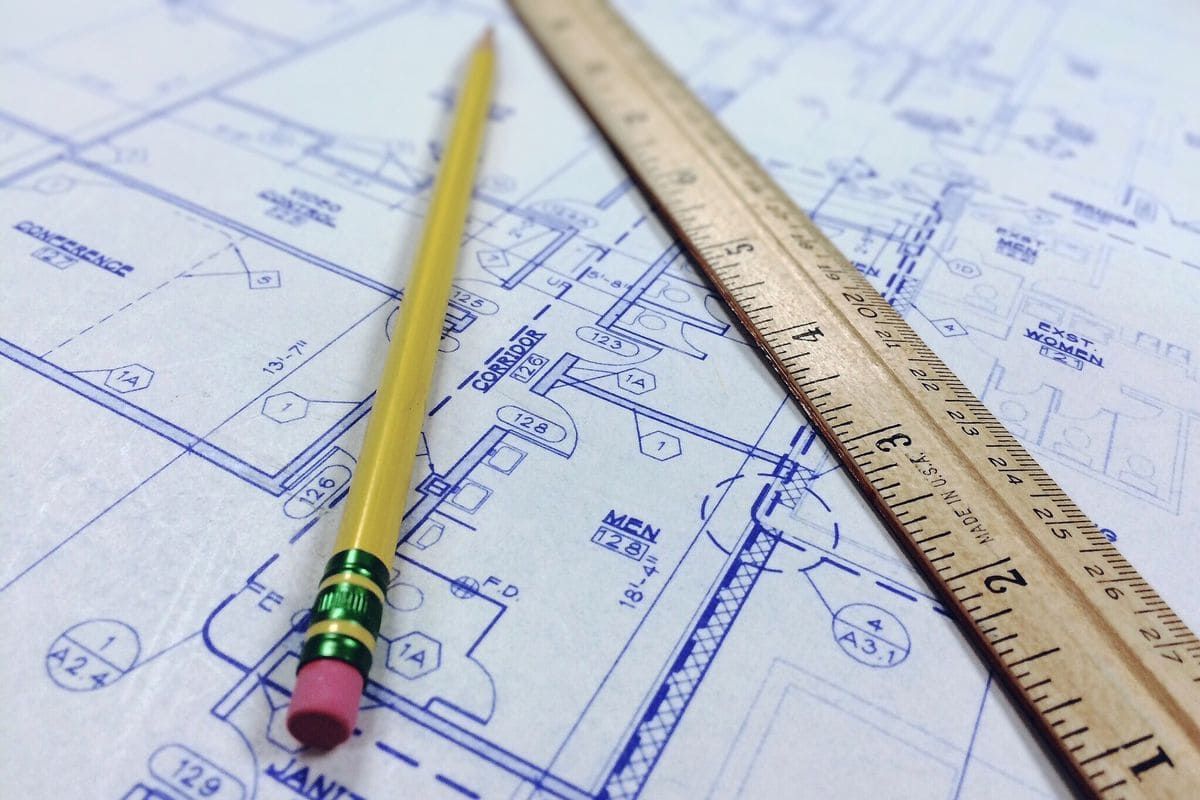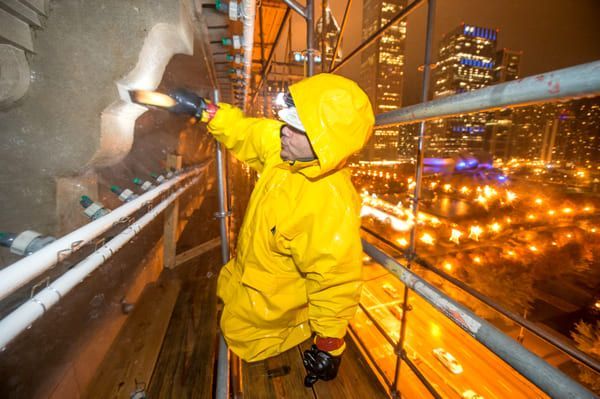Masonry structures are valued for their durability, but they are not immune to the effects of water infiltration. If you're a property manager overseeing a commercial masonry restoration project or a facilities manager maintaining a historic structure, understanding the role of proper drainage is important. Masonry deterioration is almost unavoidable without good drainage systems, eventually leading to expensive repairs like masonry lintel replacement or concrete façade restoration.
In this blog, we’ll explore how poor drainage impacts masonry, the warning signs of water-related damage, and best practices to help your masonry last a long time.
How Water Impacts Masonry
Water is one of masonry’s greatest opponents. While masonry materials like brick, stone, and mortar are designed to hold off the elements, constant exposure to moisture can damage their durability. Here’s how:
1. Freeze-Thaw Cycles: In climates with fluctuating temperatures like Chicago, water absorbed by masonry can freeze and expand, causing cracks, spalling, and disintegration. Over time, these cycles can lead to structural damage.
2. Efflorescence: Water moving through masonry dissolves salts, which are then deposited on the surface as the water evaporates. While efflorescence is primarily cosmetic, it indicates that moisture is getting into your masonry’s structure.
3. Mold and Mildew Growth: Damp conditions create the perfect environment for mold and mildew, which not only stains your masonry but can also contribute to health concerns in occupied buildings. It only takes as little as four weeks for mold to grow to a damaging extent on a surface that was previously clean.
4. Mortar Erosion: Eroded mortar joints weaken the masonry bond, often requiring commercial masonry restoration contractors to repair the damage.
The Role of Proper Drainage in Masonry Preservation
Drainage is your first line of defense against water-related masonry issues. Effective drainage systems prevent water from pooling, infiltrating, and weakening the structure. Here's why proper drainage is important:
1. Prevents Water Accumulation
Standing water around a building’s foundation or on flat surfaces like terraces can seep into masonry walls, initiating the freeze-thaw cycle or causing saturation. Drainage systems such as weep holes, gutters, and sloped grading direct water away from vulnerable areas.
2. Reduces Hydrostatic Pressure
Excess water in the soil around a structure creates hydrostatic pressure, which can force water through masonry foundations. Proper grading, drainage tiles, and sump pumps reduce this pressure and protect the masonry.
3. Extends Lifespan of Masonry
By keeping masonry dry, drainage systems reduce the likelihood of spalling, cracking, and mortar erosion. This preservation extends the lifespan of your structure while also decreasing your maintenance and repair costs.
4. Supports Energy Efficiency
Moisture in masonry walls can reduce your building’s insulation efficiency, leading to higher energy costs. Proper drainage keeps walls dry, maintaining their insulating properties.
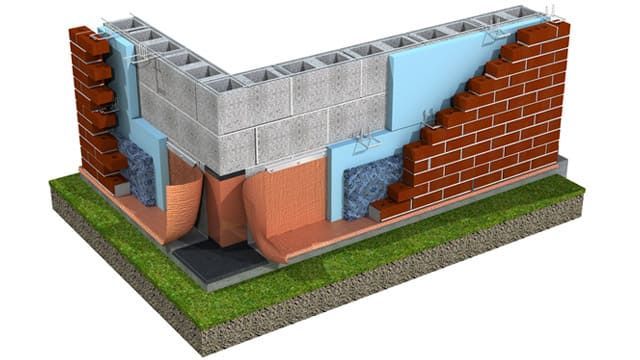
Signs of Poor Drainage and Water Damage
For property and facilities managers, regular inspections are important to catch drainage-related issues early. You should look for these warning signs:
- Visible Cracks or Spalling: These are often the result of freeze-thaw damage.
- Efflorescence: White, powdery deposits indicate water movement through the masonry.
- Damp Walls or Mold Growth: Persistent dampness suggests drainage problems.
- Eroded Mortar Joints: Missing or crumbling mortar is a clear indicator of water infiltration.
- Pooling Water: Water accumulating near the foundation is a sign that grading or drainage systems need attention.
Best Practices for Effective Masonry Drainage
To prevent masonry deterioration, consider the following best practices:
1. Install and Maintain Gutters and Downspouts:
Ensure water is directed away from the structure and check for blockages regularly.
2. Grade the Landscape: Create a slope away from the foundation to prevent water from pooling.
3. Incorporate Weep Holes: These small openings in masonry walls allow trapped moisture to escape, reducing internal water buildup. Systems like MortarNet catch and suspend mortar droppings above weep holes and flashing, which prevents blockages while allowing water and air movement.
4. Use Waterproofing Systems: Apply sealants or waterproofing membranes to protect vulnerable masonry surfaces.
5. Inspect Regularly: Conduct routine inspections to identify and address issues before they escalate.
6. Consult Professionals:
If drainage issues persist or water damage is extensive, work with masonry restoration experts like RestoreWorks to implement effective solutions.
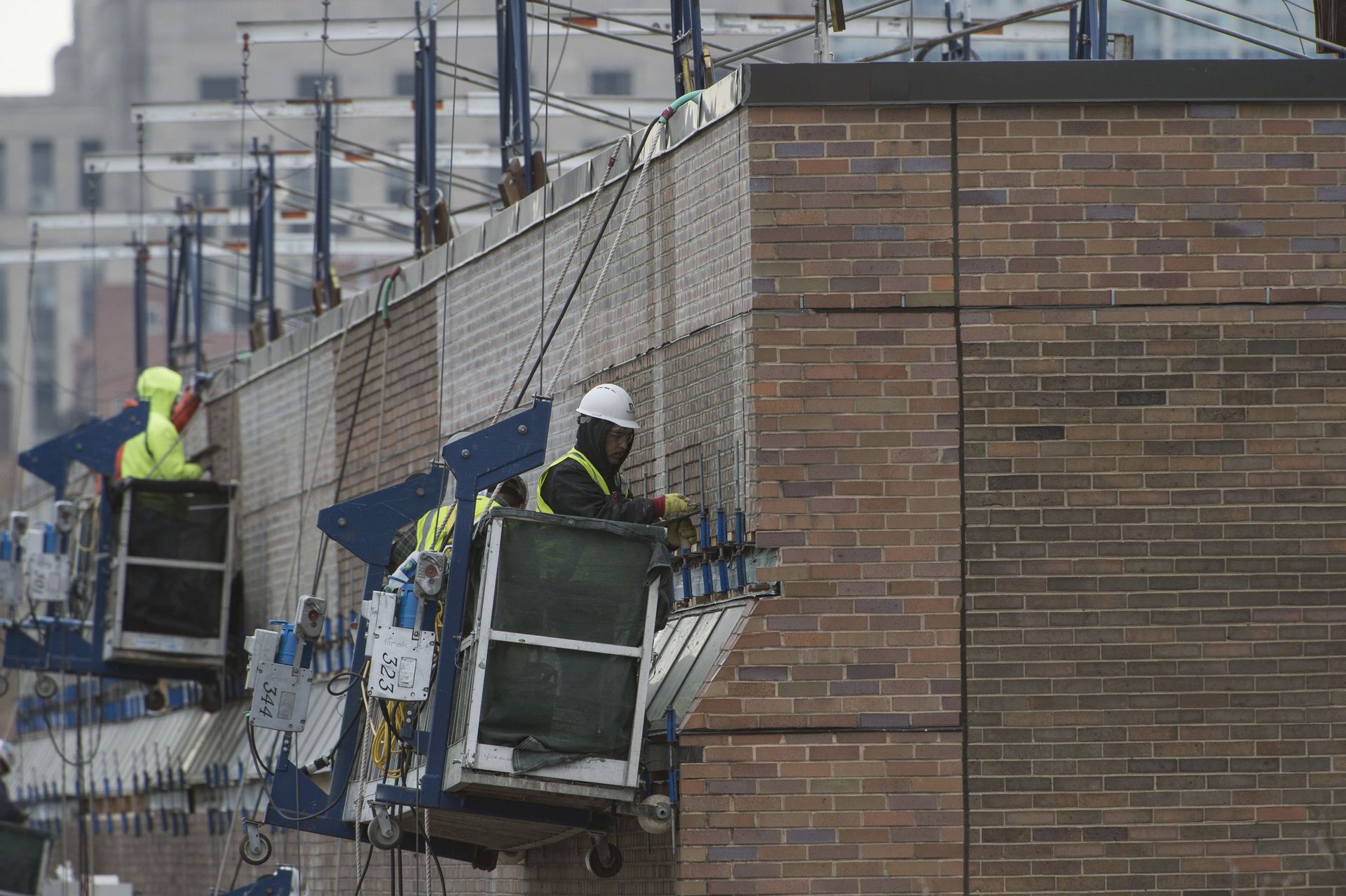
Conclusion: Prioritize Drainage to Protect Your Investment
Masonry structures are an investment in both form and function. Proper drainage is a maintenance task that is the cornerstone of masonry preservation. By understanding the risks of water infiltration and applying proactive drainage strategies, you and other property managers can assure the longevity and safety of your masonry structures.
At RestoreWorks, we specialize in commercial masonry and concrete façade restoration in Chicago. If you’re facing water-related masonry challenges or need guidance on implementing effective drainage solutions, our team is here to help. Contact us today to learn how we can protect your masonry structures with lasting results.

